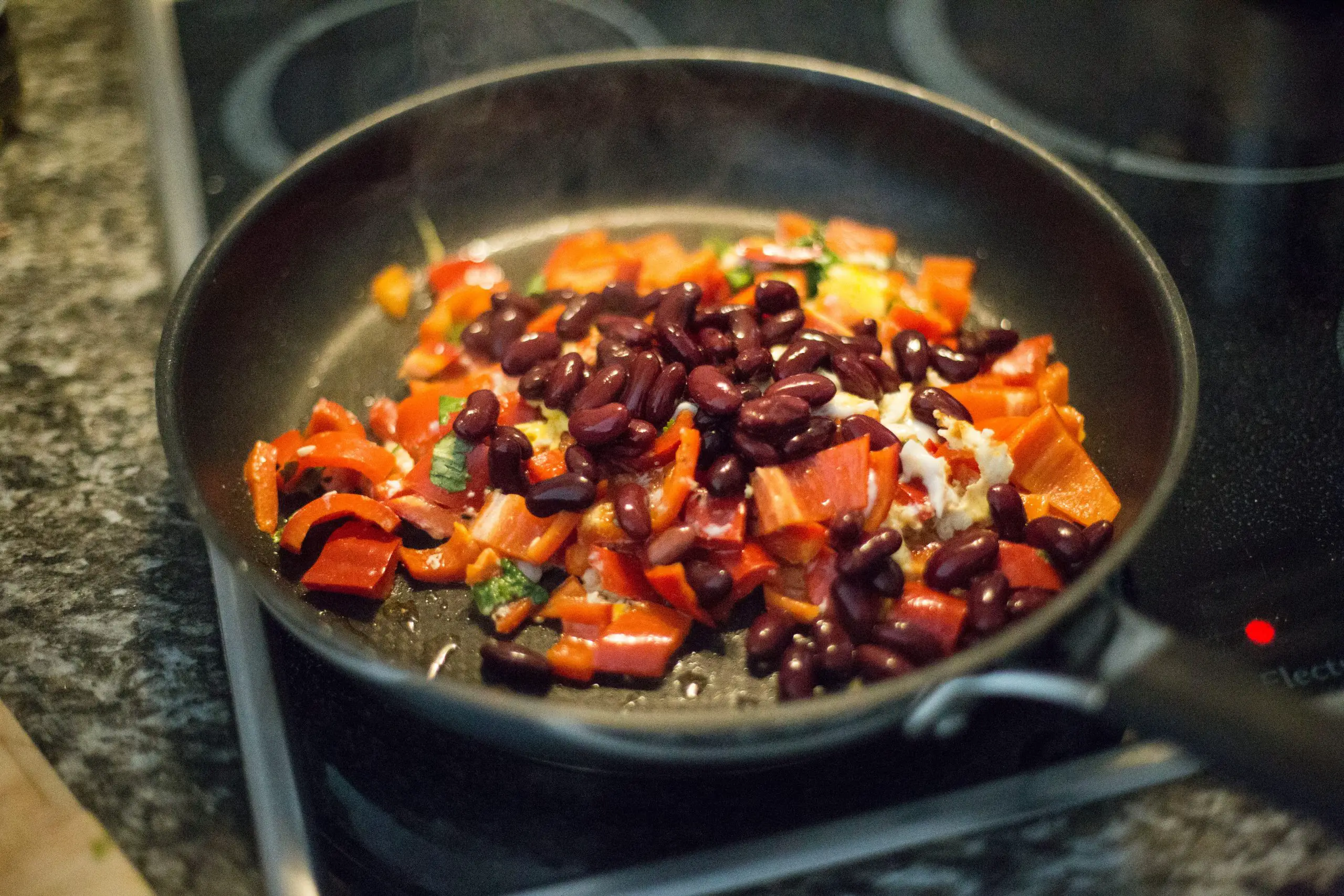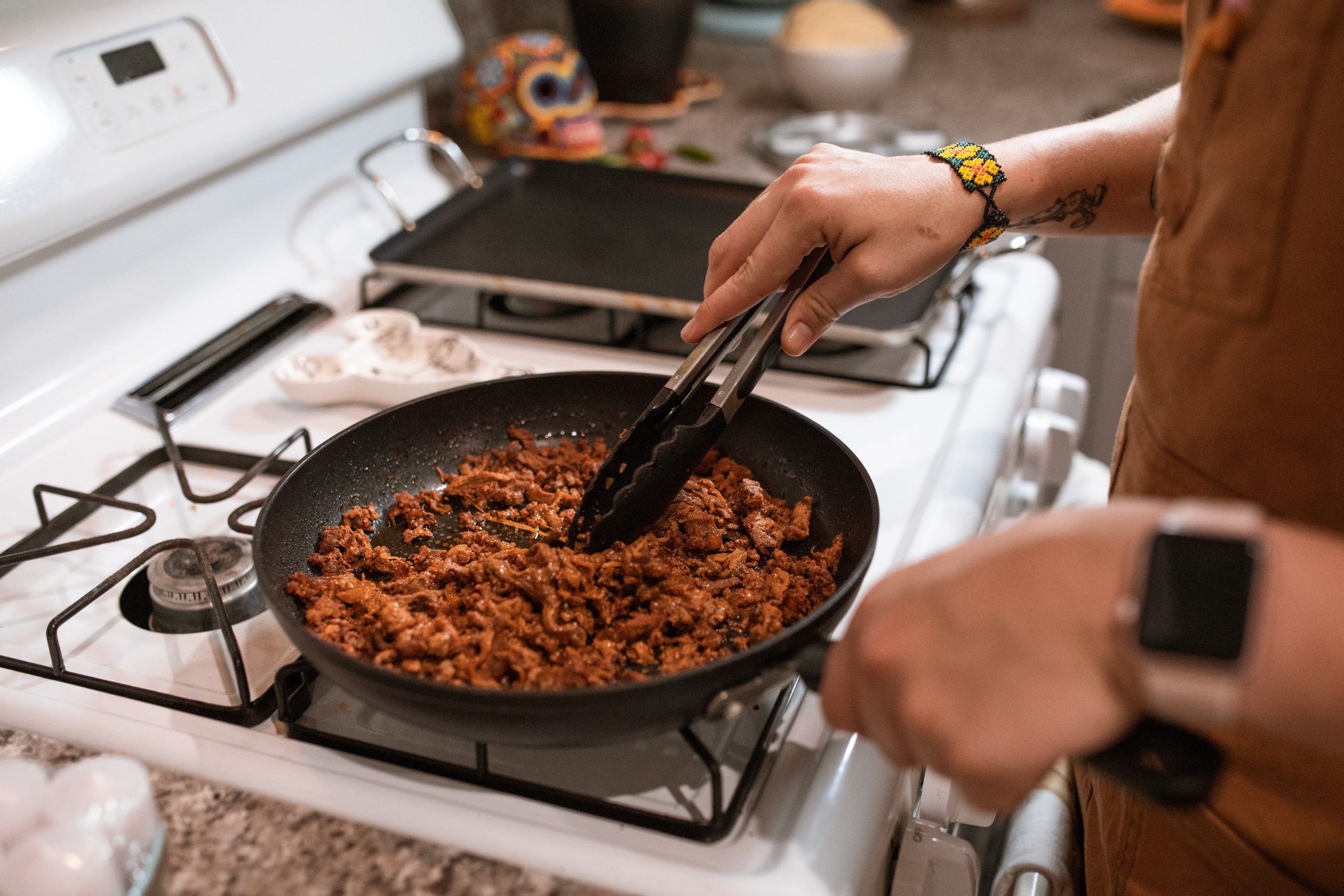Reheating food is a common practice, regardless of whether you prepare a lot of food to prepare meals for the week or enjoy the convenience of leftovers. Even though this technique is commonplace in homes worldwide, whether you may reheat meals twice still stands.
Reheating food more than once is not advised, even though many individuals do so. Even though heat kills germs, heat-stable toxins often persist and can lead to food poisoning. Furthermore, the quality of food may be affected by repeated reheating.
You and your family can avoid food illness by learning safety precautions about reheating leftovers. Learn more about reheating suggestions and what you can see in the following paragraphs.

Is it Safe to Reheat Food Twice?
Food cooked and kept in the refrigerator occasionally becomes contaminated or contaminated with toxic substances. Due to the hazardous bacteria that develop on food after it has been prepared, repeatedly reheating food can cause food poisoning. When heated again, the heat kills bacteria but not poisons.
Most people know that soon after food has finished cooking, bacteria start to develop on it. Food should be refrigerated within two hours since bacteria develop more quickly the longer it is left out.
Due to the cooler temperatures, bacteria development is slowed once the meal has been refrigerated. Even though some bacteria do not multiply quickly, they increase the longer the food is kept in the refrigerator. Some of the bacteria produce toxic byproducts that also accumulate in food.
The qualities of the food are broken down when you remove the dish from the refrigerator to reheat it, which enables the bacteria to start growing. Bacteria are frequently eliminated when food is heated adequately, defined as reaching a temperature of about 160°F and steaming throughout.
However, the toxins that develop on the food as it ages in the refrigerator are heat-stable, which means they can endure high temperatures. As a result, each time the food is reheated, you are exposed to more chemicals, which might result in food poisoning.
After reheating meals more than once, you risk compromising the dish’s integrity and exposing yourself to bacteria and toxins. This implies that the food’s quality degrades every time it is reheated. Food that is bland and unpleasant to eat may arise from this.
What Foods should Not be Reheated?
Even though leftovers are common in kitchens, some meals should never be reheated more than once. This is because some foods, when heated through, can spread various nasty food poisoning disorders like botulism and upset stomach.
To save waste and to be able to enjoy leftovers for several days, many people decide to store them in the refrigerator. Some foods should never be kept and reheated, yet these same folks might not be aware of this.
Potatoes—When potatoes are exposed to the air for any time, dangerous germs that cause botulism may develop. Reheating is not hot enough to eradicate this particular strain of germs. You shouldn’t reheat cooked potatoes if they aren’t in the refrigerator. Check out the following list of foods that are never safe to reheat:
Mushrooms—Because they are rich in proteins, if mushrooms are kept at room temperature, bacteria can grow and degrade the viral proteins. Your digestive system can suffer if you reheat mushrooms.
Chicken: After it has been cooked, the chicken should occasionally not be reheated. This is because most chicken does not heat through at the same temperature.
Some claim that boiled eggs can be properly reheated. You risk contracting the unpleasant effects of food poisoning if you chill the eggs and reheat them. Remember that eggs should never be left out for any time since salmonella risk can develop quickly.
Eating rice as soon as possible after cooking is advised since the Bacillus Cereus bacteria may survive the heat and thrive on rice. After it has been cooked, rice is one meal that should never be reheated. Therefore, warming rice puts you at risk of food illness.
How can you Tell if it is Safe to Serve a Reheated Dish?
It is important to understand that food should be heated to at least 165°F to determine if it may be served. A food thermometer should be used to monitor the meal’s internal temperature before serving to ensure the security of anyone consuming it.
Keep in mind that the dish shouldn’t be served if it contains any foods that aren’t advised for warming. The last thing you would want is for someone to consume leftovers and become ill.
Any food should be warmed until it is steaming throughout to protect everyone’s safety, especially if you don’t have a food thermometer. Soups, stews, and sauces should be brought to a boil while constantly stirring to ensure that the heat is dispersed evenly.
Rotating and stirring your food midway through the cooking cycle is crucial if you decide to reheat it in the microwave. This makes it possible for the entire dish to receive heat uniformly.
If you frequently reheat leftovers, you should get a food thermometer to make sure the meal is safe to give to others. Without a thermometer, you run the danger of the food not being sufficiently heated to kill any potentially harmful bacteria.
How should Cooked Food be Reheated Correctly?
You can take several steps to guarantee you are reheating prepared food properly if you insist on doing so to prevent food poisoning. Many of these methods are advised whether you are reheating for your full family or just yourself.
It is crucial to preserve each serving of a dish you have prepared to be used as your week’s meals in a different container. By doing this, you’ll be able to prevent repeatedly reheating the food and perhaps contaminating it.
When making soups, stews, or anything similar, it is advised to remove the amount you intend to serve when you reheat it for yourself or other people. By doing this, the remainder of the dish can stay out of contact with dangerous microorganisms that could spoil it.
How are Reheated Foods Harmful to Me?
Staph aureus is present on human skin, and anyone who handles food while it is being prepared may introduce some bacteria. Staph aureus starts to develop and release toxins when contaminated food is exposed to room temperature for longer than two hours. The person who consumes the food will become sicker the more toxic the food is. If the food is “temperature abused,” a foodborne illness may result if it is “perishable,” meaning it should be refrigerated to prevent bacteria from growing at room temperature.
Meat and meat products, poultry and egg products, egg, tuna, chicken, potato, and macaroni salads, bakery items including cream-filled pastries, cream pies, and chocolate éclairs, sandwich fillings, milk, and dairy products are among the foods that frequently cause staphylococcal food poisoning. They may also contain Staph Wellness in meat animals and mastitis in dairy cows. It’s possible that raw milk and raw milk products also contain Staph aureus.
Which Kinds of Food are Considered Good for Health?
We seem to discover a new “superfood” that will transform our lives every morning. How do you choose what is truly beneficial for you in light of the wealth of information available? Here are the top 15 meals that, in the opinion of our experts, you should eat:
Fish
Eat more fish, which are rich in beneficial omega three fatty acids, and fewer servings of red meat to lower your risk of developing ailments, including cancer, heart disease, and stroke. – Bob Canter, UC Davis Division of Surgical Oncology’s professor of surgery
Any Cruciferous Vegetables, Such as Broccoli
These foods are nutrient-rich, especially in glucosinolates, essential to detoxification. The best preparations are either raw or rapid steaming for five to 10 minutes.
Beets
“They contain a remarkable array of protecting carotenoids, regardless of color—red, yellow, or golden—or part—root or greens. It has been demonstrated that their dietary nitrates can produce nitric oxide, which enhances endurance training. —Alex Nella, registered pediatric dietitian
Leafy Green Vegetables like Spinach
lutein and zeaxanthin, minerals that can help prevent macular degeneration, are abundant in these, according to Jeffrey Caspar, professor of ophthalmology at the UC Davis Eye Center.
Kale
Brandee Waite, director of the UC Davis Sports Medicine program, says, “it’s a green leafy veggie that I adore chopped in salad or cooked with onion and garlic. It is nutrient dense, contains many antioxidants, and can help lower cholesterol.”
Reference: When Healthy Food Makes You Hungry
One of the most frequent and routine tasks that customers engage in daily is choosing food. Nevertheless, it frequently necessitates considering various aims or goals (for example, flavor, nutritional content, and price). It may include a challenging decision-making process aimed at achieving these various goals. While people often eat to satisfy their appetite, many also urge maintaining good health as a primary consideration when choosing food. Eating healthily places restrictions on people’s ability to choose their food: instead of choosing what seems to best fulfill their desire, they must choose from a subset of items that are also healthy or forego the chance to eat.
Why do We Eat Food?
Nutrition absorption comes first on the list. Our bodies need energy from nutrients to grow, stay active, and maintain good health. In other words, food’s primary purpose is to maintain our survival.
The second one is meeting our psychological requirements. Food’s purpose is to influence one’s senses and behavior by delivering tastes and flavors. He uses a chocolate cake as an illustration. Although it is delectable, the body does not require it to survive.
Physical modifications are the final function. Nutrient-rich foods give our bodies the energy they need to heal themselves. It can keep us healthy, improve our complexion, and extend our lives.
So when it was revealed that eating plays a significant role in maintaining our health, we began to value dietary supplements. Foods that enhance health have so gained popularity in recent years.
Conclusion
According to experts, there are specific meals that people should have every day. These are made up of lean protein and a variety of vegetables. Olive oil, nuts, and berries are other foods that can lower a person’s risk of contracting certain chronic diseases. Eating foods from all the food groups can increase their intake of essential nutrients.
Even though many people do it, repeatedly heating meals is not advisable. Heat destroys germs, but heat-stable poisons frequently linger and can cause food poisoning. Furthermore, frequent reheating may degrade the quality of food.

